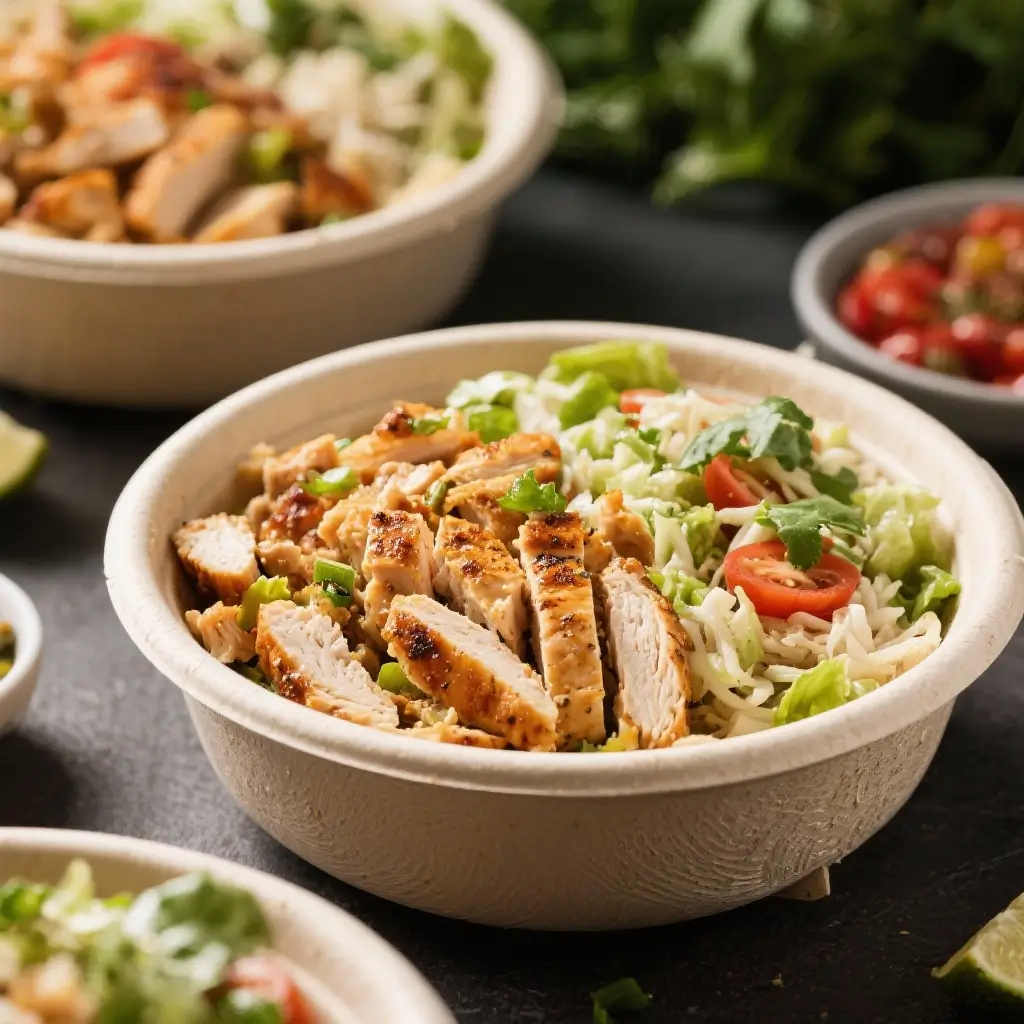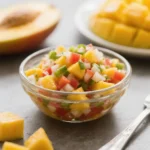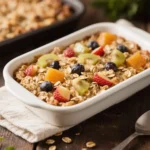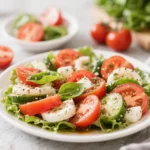Introduction
The Chicken Shawarma Bowl is a vibrant, flavorful, and satisfying meal that brings the bustling streets of the Middle East straight to your kitchen. Combining tender, spiced chicken with fresh vegetables, aromatic rice or grains, and a creamy tahini or garlic sauce, this bowl offers a perfect balance of textures and tastes. Whether you’re looking for a quick weeknight dinner or a healthy lunch option packed with protein and nutrients, the Chicken Shawarma Bowl delivers on every level. It’s not just delicious—it’s customizable, nutritious, and incredibly easy to prepare once you know the secrets behind authentic shawarma seasoning and cooking techniques.
The History
Shawarma, derived from the Turkish word “çevirme” meaning “turning,” has its roots in the Ottoman Empire and evolved over centuries into one of the most beloved street foods across the Middle East. Originally made with lamb stacked on a vertical rotisserie, it was slowly roasted and shaved off in thin slices. As trade routes expanded and cultures intermingled, variations emerged—chicken, beef, and even turkey versions became popular, especially in Lebanon, Syria, Egypt, and Palestine. The concept eventually traveled globally, adapting to local tastes and dietary preferences. The modern Chicken Shawarma Bowl is a contemporary twist on this classic dish, transforming the wrapped sandwich format into an open, deconstructed grain bowl format that highlights each ingredient while making it more accessible for health-conscious eaters and meal preppers alike.
Ingredients Breakdown
The magic of a Chicken Shawarma Bowl lies in its layered complexity—each component plays a vital role in creating harmony on the plate.
- Chicken: Boneless, skinless chicken thighs are ideal due to their juiciness and ability to absorb bold spices without drying out. Breast meat can be used but tends to be less flavorful and more prone to toughness if overcooked.
- Spices: A signature blend typically includes ground cumin, coriander, paprika (smoked or sweet), turmeric, cinnamon, cardamom, cloves, allspice, black pepper, and garlic powder. This mix gives shawarma its warm, earthy, slightly sweet depth.
- Lemon Juice & Olive Oil: These act as both marinade components and tenderizers. Lemon adds brightness and helps break down proteins, while olive oil carries fat-soluble flavors and keeps the chicken moist.
- Garlic and Onion: Freshly minced garlic and grated onion add pungency and natural sugars that caramelize during cooking, enhancing flavor.
- Grains: Basmati rice is traditional, but quinoa, couscous, bulgur, or even cauliflower rice offer lighter, gluten-free alternatives.
- Vegetables: Common additions include shredded lettuce, diced tomatoes, cucumbers, red onions, pickled turnips, parsley, and sometimes roasted bell peppers or grilled eggplant.
- Sauces: Tahini sauce (tahini + lemon juice + garlic + water) or garlic yogurt sauce (Greek yogurt + garlic + lemon + salt) provide cooling contrast to the spicy meat.
- Toppings: Sumac onions, olives, feta cheese, hummus, or hot sauces like zhug or harissa elevate the bowl’s complexity.
Step-by-Step Recipe
- Marinate the Chicken: In a large bowl, combine 1½ pounds (680g) of sliced chicken thighs with ¼ cup olive oil, juice of 1 large lemon, 4 minced garlic cloves, 1 tablespoon grated onion, 1 tsp ground cumin, 1 tsp paprika, ½ tsp turmeric, ½ tsp cinnamon, ½ tsp coriander, ¼ tsp cardamom, ¼ tsp cloves, 1 tsp salt, and ½ tsp black pepper. Mix thoroughly, cover, and refrigerate for at least 2 hours—or ideally overnight—for maximum flavor infusion.
- Cook the Grain Base: Rinse 1 cup basmati rice under cold water until the water runs clear. Cook in 1¾ cups water with a pinch of salt and a drizzle of olive oil. Bring to a boil, reduce heat, cover, and simmer for 15–18 minutes until fluffy. Let rest covered for 5 minutes, then fluff with a fork. Alternatively, cook quinoa or another grain according to package instructions.
- Cook the Chicken: Heat 1–2 tablespoons of olive oil in a large skillet over medium-high heat. Remove chicken from marinade and cook in batches, avoiding overcrowding. Sear for 5–7 minutes per side, stirring occasionally, until golden brown and internal temperature reaches 165°F (74°C). For extra authenticity, use a grill pan or outdoor grill to get charred edges.
- Prepare Vegetables: While chicken cooks, chop 1 cup lettuce, 1 diced tomato, ½ cucumber (sliced or diced), ¼ red onion (thinly sliced), and a handful of fresh parsley. Optionally, quick-pickle red onions by soaking them in equal parts vinegar and water with a pinch of sugar and salt for 20–30 minutes.
- Make the Sauce: Whisk together ½ cup tahini, juice of ½ lemon, 1 minced garlic clove, ¼ tsp salt, and 3–4 tablespoons warm water until smooth and creamy. Adjust consistency and seasoning to taste. Alternatively, mix 1 cup Greek yogurt with 1 crushed garlic clove, 1 tbsp lemon juice, 1 tbsp olive oil, salt, and pepper.
- Assemble the Bowls: Divide cooked grain among four bowls. Top with sliced chicken, fresh vegetables, a generous drizzle of sauce, and optional extras like hummus, feta, olives, or sumac onions. Serve immediately with warm pita bread on the side if desired.
Tips
- Marinate Overnight: The longer the chicken marinates, the deeper the flavor penetration. Up to 24 hours is optimal.
- Don’t Skip the Fat: Use full-fat yogurt or tahini for richer, creamier sauces that cling better to ingredients.
- Rest the Chicken: After cooking, let the chicken rest for 5 minutes before slicing to retain juices.
- Brown, Don’t Boil: Achieve restaurant-quality sear by ensuring your pan is hot before adding chicken. Avoid steaming by not overcrowding the pan.
- Balanced Texture: Combine crunchy (cucumber, lettuce), soft (rice, chicken), creamy (sauce, hummus), and tangy (pickles, lemon) elements for a dynamic eating experience.
- Meal Prep Friendly: Components can be prepped separately and stored in airtight containers for up to 4 days. Reheat chicken and rice gently; keep veggies fresh until serving.
- Double the Spices: Make a big batch of shawarma spice mix and store it in a cool, dark place for future use—great for roasting vegetables, seasoning meats, or boosting soups.
Variations and Customizations
The beauty of the Chicken Shawarma Bowl is its adaptability. Here are some creative twists:
- Vegan Version: Replace chicken with marinated tofu, tempeh, or chickpeas. Use tahini sauce instead of yogurt-based options.
- Low-Carb/Keto: Swap grains for cauliflower rice or chopped kale. Add avocado slices and extra olive oil for healthy fats.
- Mediterranean Twist: Include kalamata olives, artichoke hearts, roasted red peppers, and crumbled feta for a Greek-inspired flair.
- Spicy Kick: Add sliced jalapeños, harissa paste, or a dash of cayenne to the marinade or sauce.
- Breakfast Bowl: Top with a fried or poached egg, roasted potatoes, and a sprinkle of za’atar for a brunch version.
- Tex-Mex Fusion: Use shawarma-spiced chicken with black beans, corn, salsa, and guacamole—swap tahini for sour cream.
- Gluten-Free: Naturally gluten-free when served without pita. Ensure all spice blends and sauces are certified GF if needed.
- Kids’ Version: Mild spices, mild sauce, diced chicken, and fun toppings like shredded carrots and cherry tomatoes make it kid-friendly.
Health Considerations and Nutritional Value
A well-balanced Chicken Shawarma Bowl can be a nutrient-dense meal rich in lean protein, fiber, healthy fats, and essential vitamins.
- Protein: Chicken thighs and breast provide high-quality protein crucial for muscle repair and satiety (approx. 30–40g per serving).
- Fats: Olive oil, tahini, and optional avocado contribute heart-healthy monounsaturated fats.
- Carbohydrates: Whole grains like brown rice or quinoa offer complex carbs and fiber (5–8g per cup), supporting sustained energy.
- Vitamins & Minerals: Tomatoes and parsley are rich in vitamin C and antioxidants; cucumbers offer hydration; garlic supports immune function; turmeric has anti-inflammatory properties.
- Sodium Watch: Store-bought spice blends or sauces may contain excess sodium. Making your own allows control over salt content.
- Digestive Health: Fermented pickled vegetables and yogurt-based sauces introduce probiotics that support gut health.
- Balancing Macros: For weight management, increase greens and reduce grain portions. For athletes or active individuals, boost calories with extra chicken, nuts, or seeds.
Nutrition estimate per serving (with basmati rice, chicken thigh, tahini sauce, and standard veggies): ~550–650 kcal, 35g protein, 45g carbs, 28g fat, 6g fiber.
Ingredients
- 1½ lbs (680g) boneless, skinless chicken thighs, thinly sliced
- ¼ cup olive oil
- Juice of 1 large lemon
- 4 garlic cloves, minced
- 1 tbsp onion, grated
- 1 tsp ground cumin
- 1 tsp paprika (smoked or sweet)
- ½ tsp ground turmeric
- ½ tsp ground coriander
- ½ tsp ground cinnamon
- ¼ tsp ground cardamom
- ¼ tsp ground cloves
- 1 tsp salt
- ½ tsp black pepper
- 1 cup basmati rice or quinoa
- 1¾ cups water or broth (for rice)
- 1 cup shredded lettuce
- 1 medium tomato, diced
- ½ cucumber, sliced or diced
- ¼ red onion, thinly sliced (optional: pickled)
- ¼ cup fresh parsley, chopped
- For Tahini Sauce: ½ cup tahini, juice of ½ lemon, 1 garlic clove, 3–4 tbsp water, salt to taste
- Optional: hummus, feta cheese, olives, sumac, hot sauce, pita bread
Directions
- In a large mixing bowl, combine chicken with olive oil, lemon juice, garlic, grated onion, and all spices. Mix well to coat every piece. Cover and refrigerate for at least 2 hours, preferably overnight.
- Rinse basmati rice under cold water until water runs clear. In a medium pot, bring 1¾ cups water to a boil. Add rice and a pinch of salt. Reduce heat to low, cover, and simmer for 15–18 minutes. Remove from heat and let stand, covered, for 5 minutes. Fluff with a fork.
- Heat olive oil in a large skillet over medium-high heat. Add marinated chicken in a single layer (work in batches if needed). Cook for 5–7 minutes per side, stirring occasionally, until fully cooked and nicely browned. Transfer to a plate and cover loosely with foil.
- While chicken cooks, prepare all vegetables and herbs. If pickling onions, combine sliced red onions with equal parts vinegar and water, a pinch of sugar, and salt. Soak for 20–30 minutes, then drain.
- To make tahini sauce, whisk tahini, lemon juice, minced garlic, salt, and water until smooth. Add water gradually to reach desired consistency—creamy but pourable.
- To assemble bowls: divide rice among four serving bowls. Top with chicken, lettuce, tomato, cucumber, red onion, parsley, and a spoonful of hummus if using. Drizzle generously with tahini or yogurt sauce. Garnish with feta, olives, or sumac for extra flavor.
- Serve immediately with warm pita bread or enjoy as-is for a wholesome, satisfying meal.
FAQ
Can I use chicken breast instead of thighs?
Yes, though breasts are leaner and can dry out faster. Marinate longer and avoid overcooking to keep them juicy.
How long does the marinated chicken last in the fridge?
Up to 2 days. Beyond that, acidity from lemon may start to “cook” the meat, altering texture.
Can I freeze the cooked chicken?
Absolutely. Freeze in airtight containers for up to 3 months. Thaw in fridge and reheat gently in a skillet or microwave.
Is shawarma spicy?
Traditional shawarma isn’t inherently spicy—it’s more savory and aromatic. Add chili flakes, cayenne, or hot sauce for heat.
Can I bake the chicken instead of pan-frying?
Yes! Place marinated chicken on a lined baking sheet and bake at 400°F (200°C) for 20–25 minutes, flipping halfway through.
What can I use instead of tahini?
You can substitute with almond butter or sunflower seed butter for a similar nutty flavor, though the taste will vary slightly.
How do I store leftovers?
Keep components separate in airtight containers in the fridge for up to 4 days. Reheat only the chicken and rice; serve fresh veggies cold.
Can I make this in a slow cooker?
Yes—add marinated chicken to the slow cooker and cook on low for 4–5 hours. Shred or slice before serving.
Summary
The Chicken Shawarma Bowl is a flavorful, nutritious, and versatile meal that combines marinated, spiced chicken with fresh vegetables, aromatic grains, and creamy sauces for a restaurant-quality experience at home. Easy to customize, meal-prep friendly, and deeply satisfying, it’s the perfect fusion of Middle Eastern tradition and modern healthy eating.










